Student Learning Outcomes
Outcomes
Student learning outcomes (SLOs) clearly answer the questions “What can students do?” or “What do students know?” They describe the learning that students have achieved in the course or program and state what students know and can do as the result of their learning experience. Well-written learning outcomes define measurable achievements and final results of the learning experience, and will naturally identify how to assess if learning is accomplished.
Learning outcomes should align with the university’s mission to empower students to excel in their lives and chosen careers. This is best accomplished by aligning learning outcomes to general skills required in the workplace, such as defined by the NACE Competencies [Link “NACE Competencies” to https://www.naceweb.org/career-readiness/competencies/career-readiness-d..., or aligning with the specific knowledge required in careers for which students are being prepared. Faculty and staff review learning outcomes through the regular assessment activities to ensure the programs and courses remain relevant and align with employer workforce needs.
Student learning outcomes are shared with students in a number of ways. Course learning outcomes are listed on course syllabi provided to students at the beginning of each course. Learning outcomes for the general education Core and academic programs may be shared in student orientations and handbooks and are accessible through program websites and/or the University Catalog as indicated below. Student learning outcomes for co-curricular experiences are typically shared with students at the start of a training or learning experience.
General Education Core Learning Outcomes
Learning Outcomes for Undergraduate and Graduate Degrees and Programs: Select the name of the program and then choose “Catalog Entry” and/or “Program Webpage” to view the specific learning outcomes for that program.
Learning Objectives
Learning objectives identify learning goals for the educational experience. They answer the question “What will students learn?” and are written in the future tense, “Students will…” Objective describe the educator’s goals for the learning experience and provide a basis for the course and program design.
Objectives provide a map of what the educator will teach and establish the direction for student learning, sometimes delineating the individual steps of learning to build students’ knowledge or skills. Objectives cannot be assessed for student learning because they describe the educator’s goals or intentions for the learning experience.
To illustrate differences between outcomes and objectives, let’s use an example from photography.
Outcome: After completing this course, students can produce a cohesive body of ten digital photographs demonstrating competent technique.
Objectives:
- Students will identify the parts of a DSLR camera and explain their functions.
- Students will create digital images using appropriate camera settings and visual composition techniques.
- Students will upload images to the computer and edit them using image processing software.
In this example, the student’s achievement of the three objectives will become evident when the instructor assesses the outcomes by evaluating the photographs produced.
Differentiating outcomes from objectives ensures alignment between teaching strategies, actual learning, and assessment of student learning. This alignment also ensures that students clearly understand what they will learn and how their achievements will be assessed. Such clarity supports effective course design and enhances student success and engagement.
- Managing Outcomes in Planning & Self Study (PDF)
- Mapping Program Outcomes to Institutional Learning Outcomes in Planning & Self Study (PDF)
Wright State Online has created the following worksheets to support faculty and staff in writing course learning outcomes and objectives:

